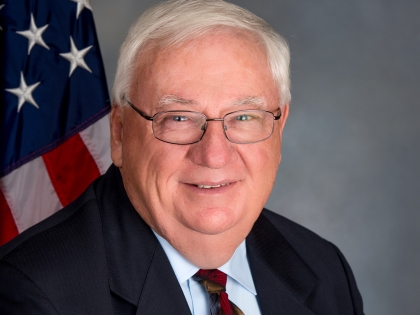
Legislators Want To Reform Bail Reform

The Nassau County Correctional Center is at the center of controversy over new bail reforms that critics say release too many potentially dangerous inmates.
New York’s new bail reform law is a scant three weeks old, and already Republican lawmakers are calling it a “disaster.”
That was the word U.S. Rep. Pete King, a Seaford Republican, used on his Facebook page last week to characterize the law that has done away with cash bail and was intended to release most defendants accused of nonviolent crimes on their own recognizance.
“The so-called ‘bail reform’ legislation passed by the Democratic-controlled State Senate in Albany and signed by Governor Cuomo has been disastrous,” King wrote on his Facebook page. “It is dangerous to our communities and must be repealed. By not allowing judges to set bail even when they believe the defendant is a threat to society, this law has resulted in hundreds of prisoners being released on Long Island including gang members from MS-13, the Bloods and Crips.”
King offered no proof that members of such notorious gangs have been released, although the same law would apply to them as to anyone else charged with nonviolent crimes. But a number of prominent local cases have gained widespread attention, and pinpointed some of what even local Democratic elected officials say are deficiencies in the law.
In one case, a woman was released with no bail after allegedly punching and cursing at three Orthodox Jewish women in Crown Heights just days before the new law was to take effect. The accused assailant still has an open case on similar charges from November 2018.
And according to Lt. Brian Sullivan, president of the Corrections Officers Benevolent Association, at least 20 known gang members have been released into the community since Jan. 1.
It is too soon for law enforcement to have gathered comparative data on arrest rates under the new law, according to Sullivan. “It will take at least 30 to 90 days to have that kind of hard data,” he said. But lawmakers on both sides of the aisle believe the current law needs fine-tuning at the least.
“I’m working with other Long Island Democrats to identify the additional crimes that should be on the list” of offenses for which bail may be required, said State Sen. John Brooks, of Seaford, whose district stretches from Freeport to Amityville, in Suffolk County, and includes all of Seaford and Wantagh.
According to Brooks, the problem began with the way that the measure became law. “Bail reform was passed as part of the budget, instead of as a separate measure,” he said. This meant it was not subject to the full debate, both in committee and on the Senate floor, that would have been part of the process had it been introduced as stand-alone legislation.
On one point, nearly all agree: Judicial review or discretion should be part of the process. “Historically, bail was only supposed to be used in cases where the judge thought there was a risk of flight,” Brooks said. Taking a defendant’s potential to commit violence into account has been off the table since earlier bail reform measures were enacted 49 years ago and was not a component of the current legislation.
Under the old system, “a judge could mandate a defendant to a substance abuse program,” Sullivan said. And defendants with mental health issues could be held for psychiatric evaluation.
“Releasing defendants with mental health issues into the community doesn’t help them or the community,” Brooks agreed.
In addition, roughly 65 percent of the nation’s inmates need treatment for alcohol and/or other substance abuse, according to the Center on Addiction. Other estimates put the figure as high as 80 percent.
“Most of our alcohol and substance abuse patients are mandated,” Program Director Susan Klein, of Southeast Nassau Guidance Center, said. “Their choice was between treatment and other legal outcomes.” Under the new system, defendants with substance abuse issues would not necessarily receive such treatment.
King acknowledged that the issue is primarily one for the state. But “I am co-sponsoring and strongly supporting federal legislation (Bill’s Promise Act - H.R. 3657) to focus attention on this dangerous situation,” he wrote. “This legislation would require the Government Accountability Office to review monitoring practices for pretrial release programs at the federal, state and local levels. This would include providing data on offenses committed by individuals on pretrial release over the past 10 years.
King said his measure had the support of law enforcement organizations, such as the Fraternal Order of Police, the National Sherriff’s Association and the National Alliance to End Sexual Violence. He also said his measure “was developed with input from law enforcement organizations.”
“Everybody agrees that we shouldn’t have people in jail just because they can’t come up with small amounts of money,” Brooks said. “But judges have to have the authority to evaluate each situation.”



